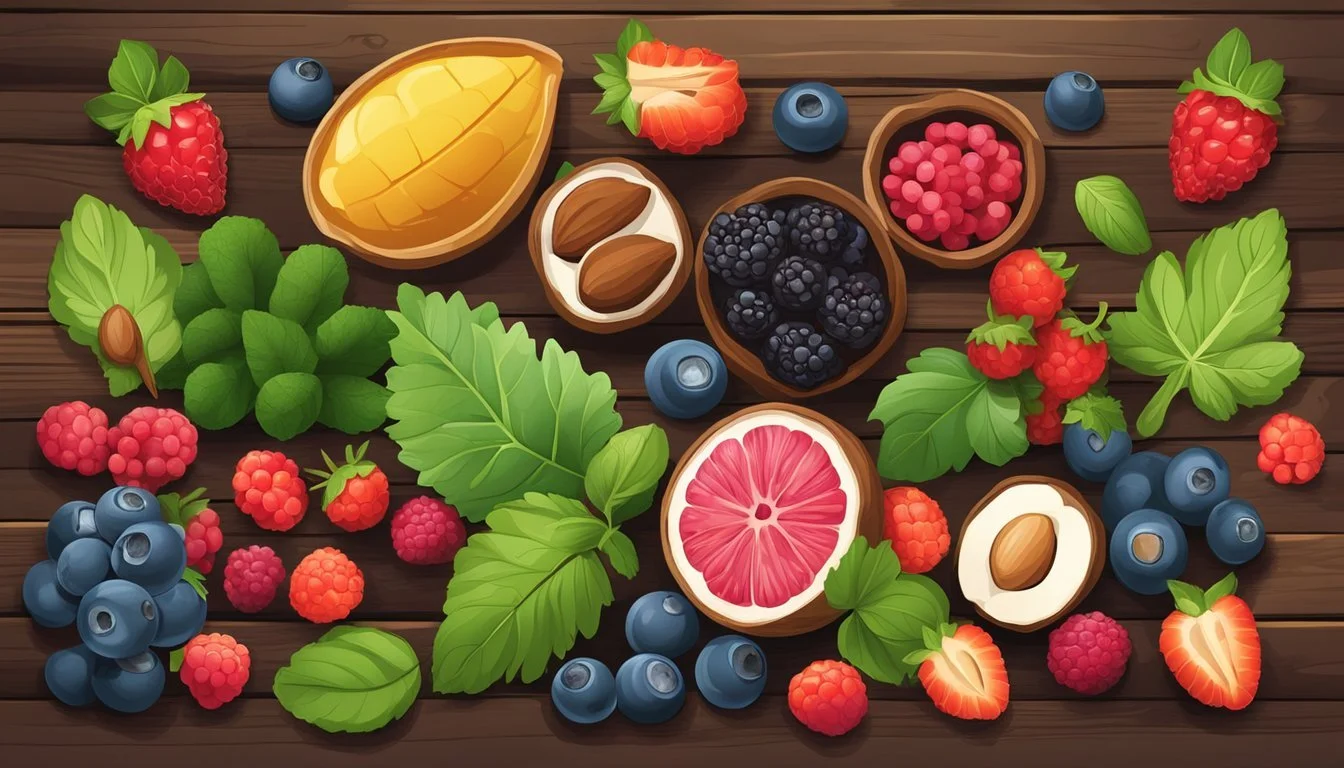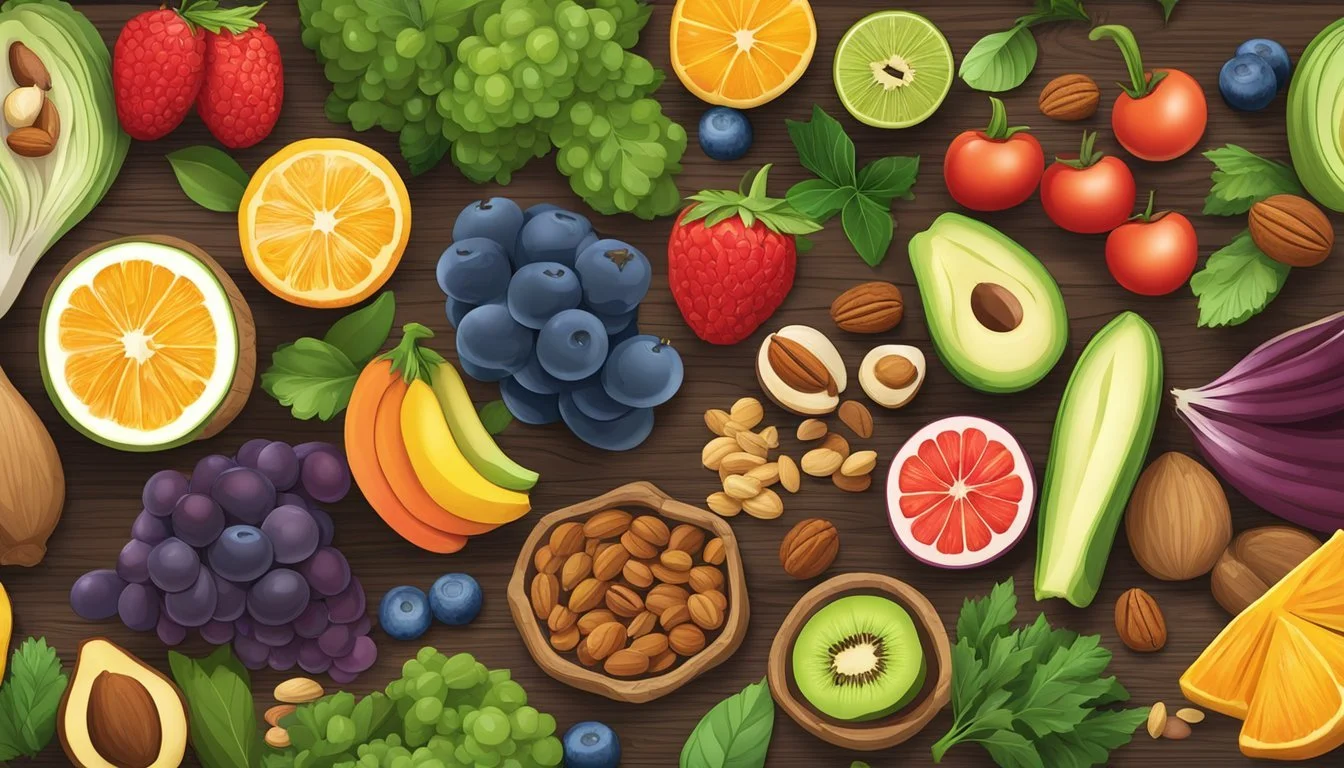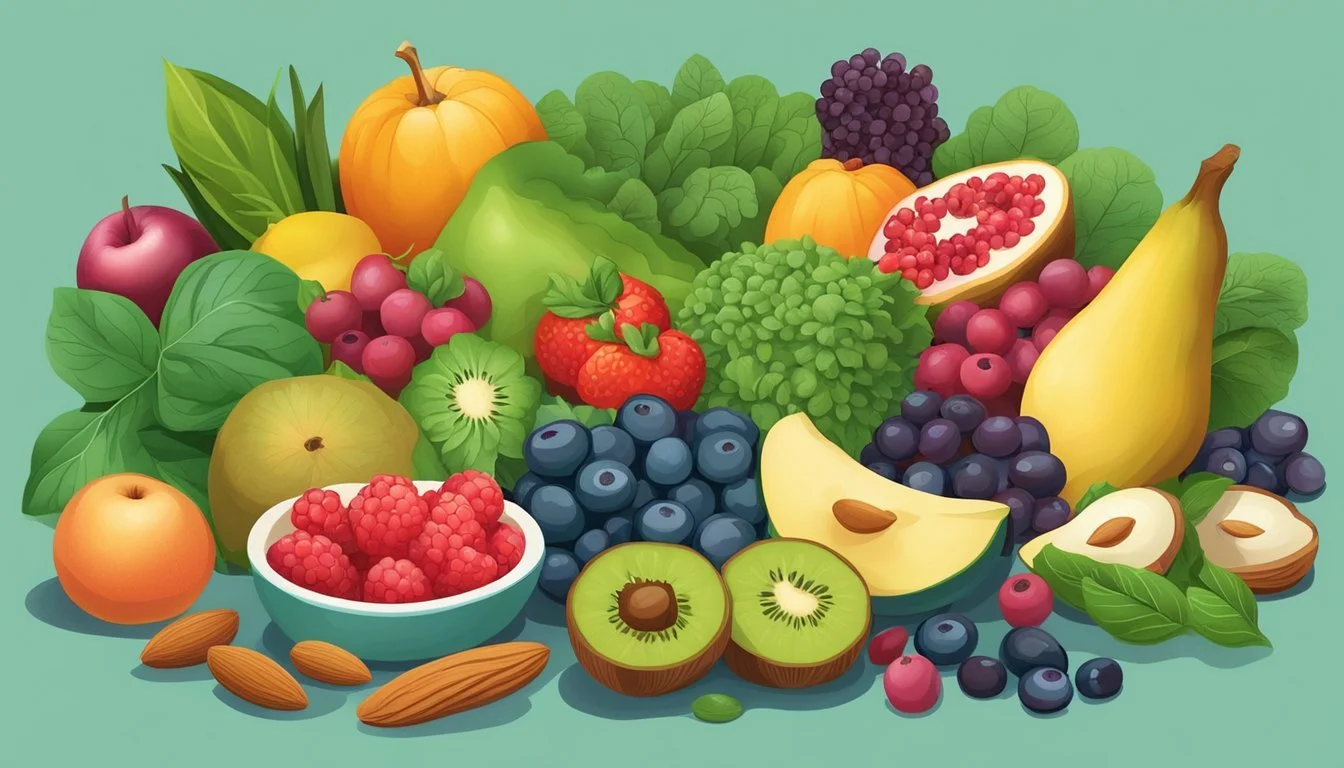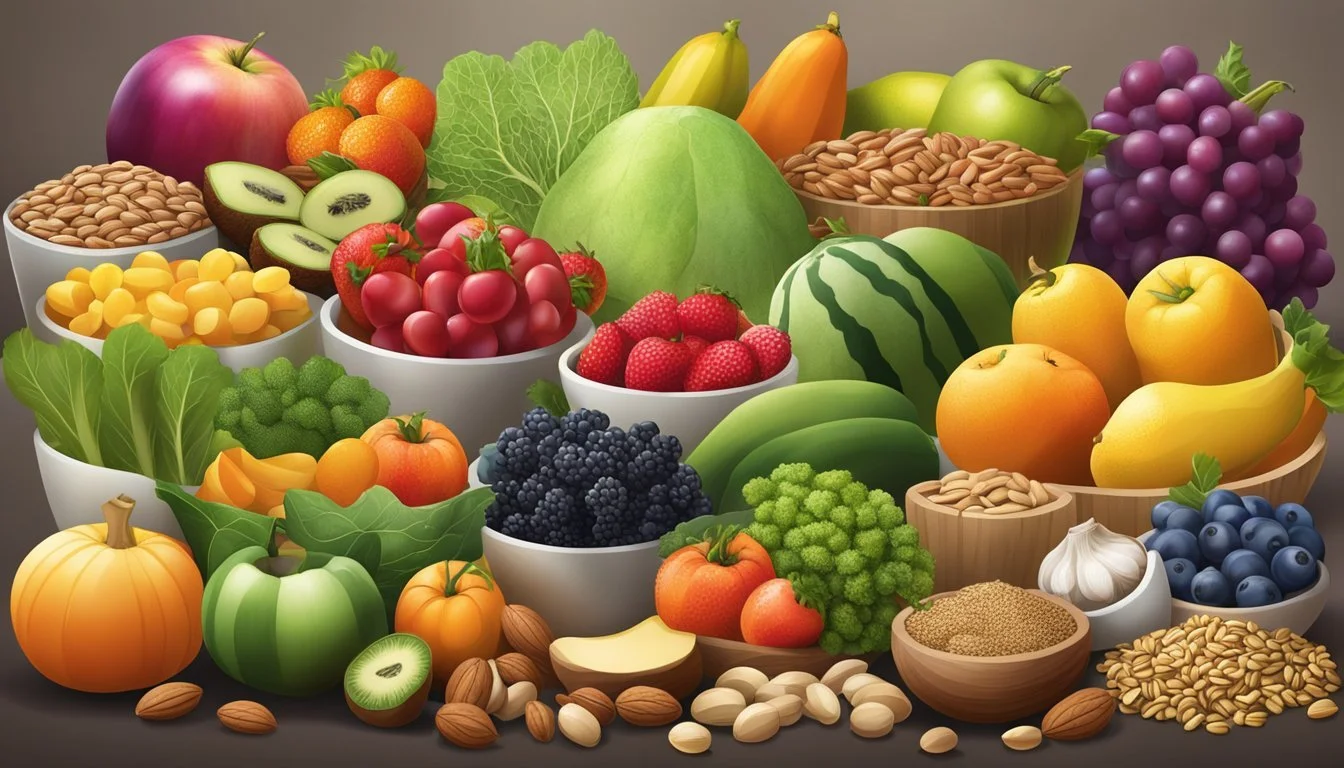Paleo Diet and Oxidative Stress
Exploring Antioxidant-Rich Foods in Ancient Eating Patterns
The Paleo diet, often referred to as the 'caveman' diet, focuses on whole, unprocessed foods that are presumed to have been available to humans during the Paleolithic era. This dietary approach emphasizes the consumption of fruits, vegetables, lean meats, seafood, nuts (What wine goes well with nuts?), and seeds while excluding grains, dairy products, processed foods, and refined sugars. Advocates suggest that this return to a more ancestral way of eating can contribute to better health and wellness, including a reduction in oxidative stress.
Oxidative stress occurs when there is an imbalance between the production of free radicals and the body's ability to counteract their harmful effects with antioxidants. This state of imbalance can lead to cellular and tissue damage, and it is linked to the development of various chronic diseases. The Paleo diet is proposed to mitigate oxidative stress by offering a rich supply of dietary antioxidants. These are compounds found in fruits and vegetables that can neutralize free radicals, thereby protecting the body from oxidative damage.
Consuming an antioxidant-rich diet aligns with the principles of the Paleo diet, which inherently includes foods high in nutrients and phytochemicals with antioxidant properties. Moreover, by reducing the intake of processed foods and sugars — known contributors to oxidative stress — adherence to a Paleo dietary pattern could be a supportive strategy for those looking to manage oxidative stress through nutritional means.
Understanding Oxidative Stress and Antioxidants
Oxidative stress generates an imbalance in the body, while antioxidants act to restore this balance. Here, we will examine the underlying mechanisms of oxidative stress, explore the crucial role antioxidants play, and identify the common sources that can boost the body’s defenses.
Mechanisms of Oxidative Stress
Oxidative stress occurs when there's an excess production of reactive oxygen species (ROS), commonly known as free radicals, which overpower the body's antioxidant defenses. These free radicals are highly reactive molecules with unpaired electrons that can damage cellular components like DNA, proteins, and cell membranes. Cells typically produce ROS during metabolic reactions, particularly within the mitochondria.
Role of Antioxidants in the Body
Antioxidants are molecules that neutralize free radicals, thus preventing them from causing harm. They donate electrons to free radicals without becoming destabilized themselves, effectively breaking the chain of oxidative damage. One of the body's most potent antioxidants is glutathione, which is crucial in cellular defense mechanisms. It's involved in processes that detoxify substances and has a direct role in the maintenance of the oxidative balance within cells.
Common Antioxidant Sources
Antioxidant-rich foods play a key role in supplying the necessary compounds to fortify the body's resilience against oxidative damage. Common sources of dietary antioxidants include:
Vegetables: such as spinach, kale, and bell peppers
Fruits: including berries, oranges, and grapes
Nuts and Seeds: like almonds, walnuts, and flaxseeds
These foods contribute to the body’s antioxidant defenses by providing a range of compounds, including vitamins A, C, and E, which are known for their antioxidant properties. By incorporating a diversity of these antioxidant sources into the diet, individuals can support their body's ability to combat oxidative stress.
The Paleo Diet: Principles and Foods
The Paleo Diet revolves around emulating the dietary habits of our Paleolithic ancestors, focusing on whole, unprocessed foods.
Core Tenets of the Paleo Diet
The Paleo Diet is grounded in the belief that modern health issues stem from the agricultural revolution, which introduced grains and legumes into the human diet. Adherents to the paleo methodology advocate for a return to the pre-agricultural era of nourishment, suggesting that the human body is optimally fueled by the foods our hunter-gatherer ancestors consumed. The core idea is to minimize the intake of foods associated with chronic diseases linked to modern diets.
Foods to Include and Avoid in the Paleo Diet
Foods to Include:
Vegetables: A cornerstone of the Paleo Diet, providing fiber and essential nutrients.
Fruits: Especially those with lower sugar content, a source of natural sweetness and antioxidants.
Nuts and Seeds: A healthy source of fats and proteins, though they should be consumed in moderation.
Fish: Particularly fatty fish rich in omega-3 fatty acids.
Grass-fed Meats: Emphasized for a more favorable profile of fats, such as omega-3s.
Eggs: Preferably from pastured or free-range sources for higher nutrient content.
Table of Recommended Paleo Foods:
Food Category Specific Foods to Include
Vegetables Leafy greens, broccoli, peppers
Fruits Berries, apples, avocados (low sugar)
Nuts Almonds, walnuts, macadamias
Seeds Pumpkin seeds, flaxseeds, chia seeds
Fish Salmon, mackerel, sardines
Proteins Grass-fed meats, pastured eggs
Foods to Avoid:
Grains: Such as wheat, barley, and rice are excluded due to their purported inflammatory properties.
Legumes: Including beans, lentils, and peanuts, based on the premise that they contain anti-nutrients.
Dairy Products: Most are eliminated, but some proponents allow for grass-fed dairy.
Refined Sugars: All forms of processed sugar are to be avoided.
Table of Foods to Avoid on Paleo:
Food Category Specific Foods to Avoid
Grains Bread, pasta, cereals
Legumes Beans, lentils, peanuts
Dairy Milk, cheese, (non-grass-fed)
Sugars Candy, soda, pastries
This diet promotes a low-carb, high-protein and high-fiber intake through its emphasis on animal proteins and a diversity of vegetables. By adhering to these principles, one aligns their eating habits closely with human evolutionary biology, potentially reducing the risk of chronic diseases and managing oxidative stress through a rich intake of natural antioxidants found in plant-based foods.
Antioxidant-Rich Foods in the Paleo Diet
In the Paleo Diet, certain foods are prized for their high antioxidant content, which can help combat oxidative stress. These foods include a range of berries, nuts, various vegetables, and quality fats.
Importance of Berries and Nuts
Berries such as blueberries are celebrated in the Paleo diet for their high levels of antioxidants, particularly vitamin C and flavonoids. Nuts, with walnuts leading the charge, are not only rich in antioxidants but also provide healthy fats and proteins.
Berries: Blueberries, strawberries, and raspberries.
Nuts: Walnuts, almonds, and Brazil nuts.
Vegetables High in Antioxidants
The Paleo diet emphasizes vegetables like spinach, broccoli, and carrots for their antioxidant properties. Spinach is a well-known source of iron and vitamin K, which are essential for many bodily functions.
Spinach: Strong in vitamins A, C, and K.
Broccoli: Rich in vitamins C and E, and an array of B vitamins.
Carrots: High levels of beta-carotene, which the body converts into vitamin A.
Quality Fats as Antioxidant Sources
The Paleo Diet also identifies avocado and certain types of fish as key sources of antioxidants. Avocados are high in vitamin E and monounsaturated fats, and fish like salmon and tuna (What wine goes well with tuna?) provide omega-3 fatty acids and selenium.
Avocados: Packed with vitamin E and healthy fats.
Fish: Salmon and tuna are rich in omega-3s and selenium.
Including these antioxidant-rich foods can help promote health and reduce the risk of chronic diseases. These dietary staples of the Paleo philosophy not only support a balanced nutrient intake but also align with the diet's focus on whole, unprocessed foods.
Antioxidants and Disease Management
Antioxidants play a crucial role in mitigating oxidative stress, which is implicated in numerous chronic conditions. By balancing oxidants and antioxidants within the body, they contribute significantly to the management and prevention of diseases.
Antioxidants' Role in Preventing Chronic Diseases
Oxidative stress, characterized by an excess of reactive oxygen species (ROS), has been linked to various chronic diseases such as cancer, heart disease, and neurodegenerative disorders. The body's defense system against this stress relies on antioxidants, which neutralize ROS, thus preventing cell damage and inflammation. Regular intake of antioxidants can reduce the risk of chronic diseases by maintaining cellular health and preserving endothelial function.
Diabetes Management with Antioxidant-Rich Foods
Consuming antioxidant-rich foods is beneficial for those with type 2 diabetes as they improve insulin sensitivity and help regulate blood sugar levels. Foods high in vitamins C and E, for example, can limit oxidative damage and are thus recommended for diabetes care. Antioxidants also help in reducing inflammation, which is often associated with insulin resistance.
Cardiovascular Health and Antioxidants
Antioxidants are essential for cardiovascular health. They aid in reducing oxidative stress which affects heart function, lowers bad LDL cholesterol levels, and improves blood pressure. A diet plentiful in antioxidant-rich foods like fruits and vegetables supports the maintenance of heart health by protecting blood vessels from oxidative damage and chronic inflammation, contributing to improved overall cardiovascular function.
Optimizing Antioxidant Intake
When adhering to a Paleo diet, it is crucial to focus on obtaining a wide array of antioxidants from food sources to combat oxidative stress. They can scavenge harmful free radicals, thereby potentially reducing the risk of chronic diseases.
When to Use Supplements
Individuals may consider antioxidant supplementation when dietary intake is insufficient or specific health conditions necessitate a higher antioxidant intake. Supplementation should be approached with caution as excessive intake may have adverse effects. Vitamin C and Vitamin E supplements are common, but their use should complement a diet rich in antioxidants, phytochemicals, vitamins, and minerals.
Supplements: To be used to fill gaps in antioxidant intake, not as a primary source.
Conditions: Specific health requirements may warrant supplementation.
Natural vs. Synthetic Antioxidants
Natural antioxidants, found in whole foods, are preferable as they often contain a complex mix of nutrients and phytochemicals that work synergistically. Synthetic antioxidants, on the other hand, may not provide the same benefits due to the absence of this complexity.
Natural Sources: Include vitamin C-rich fruits, vitamin E from nuts and seeds, and phytochemicals in vegetables.
Synthetic Sources: Use with discretion, as they may lack additional beneficial compounds found in whole foods.
Enhancing Antioxidant Absorption
To maximize antioxidant absorption, individuals should focus on a balanced intake of fiber, carbs, and fats, as certain vitamins are fat-soluble, including Vitamin E. Pairing vitamin and mineral-rich foods can further enhance absorption. For instance, Vitamin C aids in the absorption of iron from plant sources.
Fat-Soluble Vitamins: Such as Vitamin E, should be consumed with dietary fats to enhance absorption.
Food Pairings: Combining iron-rich foods with Vitamin C sources to improve iron absorption.
Lifestyle Factors Affecting Oxidative Stress
Oxidative stress occurs when there's an imbalance between the production of free radicals and the body's ability to counteract their harmful effects through neutralization by antioxidants. Lifestyle factors play a significant role in managing this balance.
Impact of Exercise on Oxidative Stress
Exercise can elicit both beneficial and detrimental effects on oxidative stress, depending on the intensity and duration. Regular, moderate exercise stimulates the production of endogenous antioxidants, such as nitric oxide, enhancing the body's ability to mitigate oxidative stress. However, excessive physical activity can increase the production of reactive oxygen species (ROS), tipping the scales towards oxidative damage. Individuals should aim for a balanced exercise regimen to maintain optimal health.
Moderate exercise: Increases antioxidant defenses
Excessive exercise: May contribute to increased ROS
Weight Management and Oxidative Stress
Obesity is a condition characterized by excess body fat, which can lead to an increased generation of ROS, contributing to oxidative stress. The adipose tissue in overweight individuals may not only lead to metabolic disturbances but also to chronic inflammation and increased oxidative stress. Effective weight management through a balanced diet and regular physical activity improves metabolism and reduces the burden of oxidative stress on the body.
Excess body fat: Linked to increased ROS production
Balanced diet and exercise: Aid in reducing oxidative stress
Stress Management Techniques
Mental and emotional stress triggers chemical reactions in the body that can increase oxidative stress. Techniques that promote relaxation and improve mental health are critical in attenuating the oxidative impact of stress. Activities such as deep breathing, mindfulness meditation, and yoga have been associated with decreased stress hormones and an upregulation of the body's natural antioxidant systems.
Chronic stress: Elevates oxidative stress via stress hormones
Relaxation techniques: Help reduce its impact
Additional Factors Influencing Oxidative Stress
While diet is a significant factor in managing oxidative stress, it is not the only one. Other crucial influencers include environmental toxins, the natural aging process, and genetic makeup, all of which can alter the body's oxidative balance and antioxidant requirements.
Environmental Toxins and Oxidation
Exposure to environmental pollutants like heavy metals, pesticides, and industrial chemicals can exacerbate oxidative stress. These toxic elements create an influx of free radicals that overwhelm the body's antioxidant defenses. For instance:
Pesticides: Chemicals such as DDT have been shown to increase oxidative stress.
Heavy Metals: Lead and mercury are known to catalyze the production of reactive oxygen species.
Regular consumption of antioxidants through diet may help combat the oxidative damage induced by these environmental factors.
Aging and Antioxidant Needs
As the body ages, it naturally experiences increased oxidative stress and a corresponding need for more antioxidants. Age-related changes in cellular function can cause a decline in the endogenous production of antioxidants like glutathione. Consider the following:
Longevity: Increased lifespan has been associated with enhanced antioxidant mechanisms.
Age: With each passing year, the efficacy of the body's defenses decreases, highlighting the importance of a diet rich in antioxidants to support health during aging.
Genetics and Individual Responses to Stress
Genetic predisposition plays a pivotal role in an individual's oxidative stress levels and their body's response to external stressors. Genetic factors can influence:
The body's natural antioxidant production.
The way an individual responds to environmental pollutants and dietary antioxidants.
People with certain genetic backgrounds may either be more resilient or more susceptible to oxidative stress, thus requiring tailored dietary and lifestyle approaches.
Conclusion
In the realm of dietary patterns and their influence on health, the Paleo diet has garnered notable attention. Central to this diet is the consumption of foods that presumably echo the dietary patterns of human ancestors, rich in antioxidants and potentially beneficial in mitigating oxidative stress.
They may find that the Paleo diet, with its emphasis on fruits, vegetables, lean meats, and avoidance of processed foods, offers a natural way to boost antioxidant intake. However, it's imperative to approach such conclusions with caution, as the diet's impact can vary widely among individuals.
Personalized nutrition emerges as a critical area for future research, promising to tailor dietary recommendations to individual needs and genetic profiles. Additionally, further studies may explore the balance between dietary antioxidants and the body's endogenous systems, contributing to a more refined understanding of dietary effects on oxidative stress and metabolic health.
It's essential to interpret the relationship between the Paleo diet and oxidative stress based on evidence-backed research rather than anecdotal reports. Researchers are encouraged to build upon current data to provide more definitive guidance on the Paleo diet's role in managing oxidative stress.
As individuals seek diets to enhance their well-being, they should consider the evolving nature of nutritional science and remain open to updated guidelines that reflect the most recent scientific discoveries.






